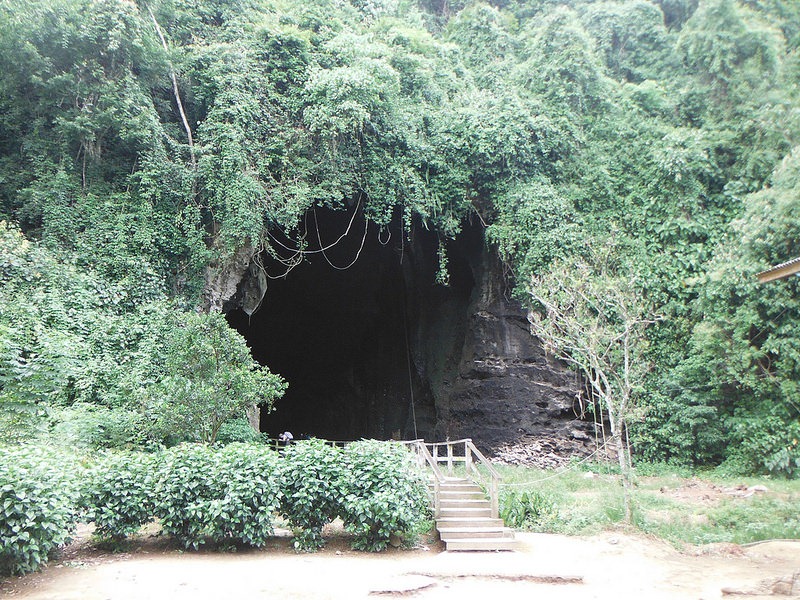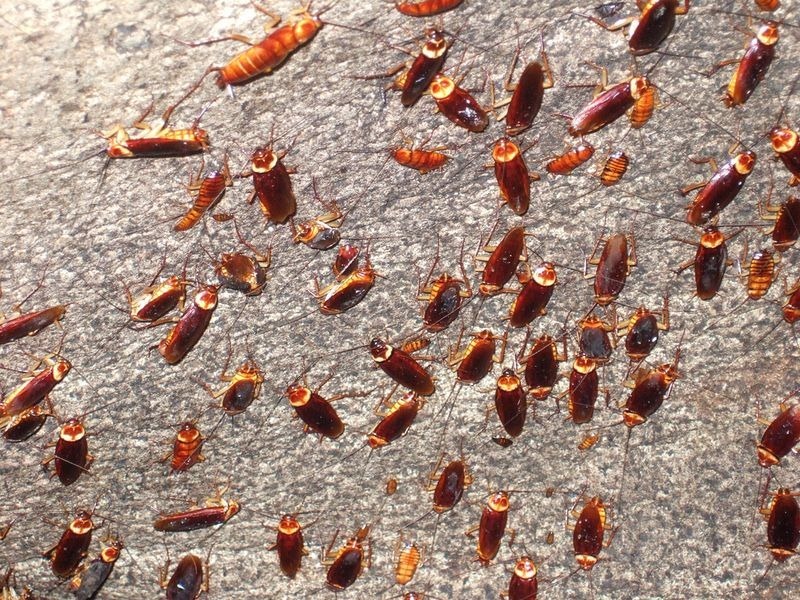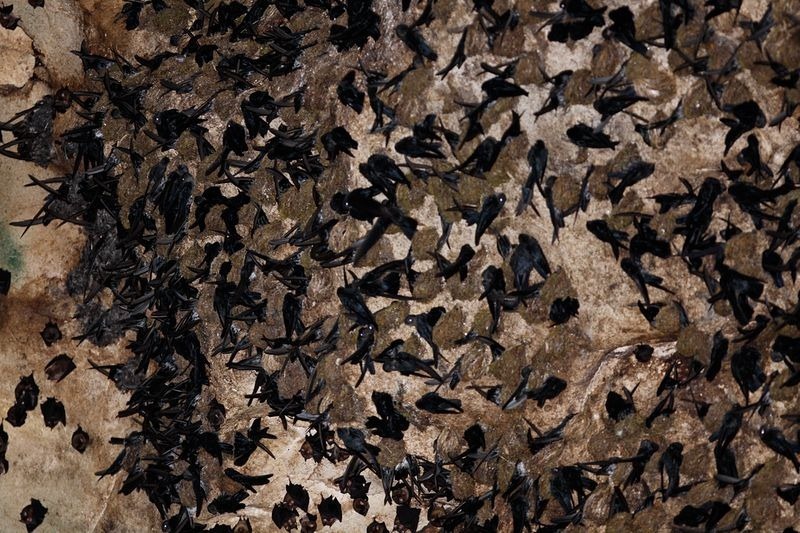Deep in the steamy jungles of Borneo, in Malaysia, is a massive crack in the limestone outcrop that leads to an intricate system of caves. Entering the caves is not for the squeamish. In the dank interiors are millions of bats that hang from the roof, while the floor and walls are covered with cockroaches, beetles, rats and other creepy bugs that feast on bat shit and dead swiftlets that fall out of their nests. The caves also house snakes that feed themselves on the rats and cockroaches. The air smells thick with ammonia because of the bird droppings. The guano deposit on the floor is estimated to be 10 feet deep. Wooden walkways through the explore-able section of the caves keep visitors safely above the horrific creatures that litter the ground.

Photo credit: Col Ford and Natasha de Vere/Flickr
Located on Gomantong Hill inside a protected forest reserve of the Sabah Forestry Department, the Gomantong Caves are the largest caves in the state of Sabah. The caves are best known for their birds' nest which has been harvested for centuries and used in the preparation of bird nest soup.
The swiftlets build their nests almost entirely with threads drawn from their saliva which hardens when exposed to air. Soup prepared from these nests is a prized delicacy in Chinese cuisines due to their rarity, supposedly high nutritional value and health benefits. Some nests also contain foreign materials such as feathers and twigs, and are known as black nests. Both are harvested for consumption, but the purer version fetches a higher price.
Harvesting of birds' nest is now regulated to prevent over-exploitation. Twice a year, from February to April and July to September, licensed locals climb to the roof of the caves and collect the nests only by using rattan ladders, ropes and bamboo poles. The first collection takes place early in the breeding season before the swiftlets lay their eggs. The birds then make another nest in which they finally lay their eggs. After the eggs have hatched and the young swiftlets have abandoned these nests, the second collection is made.
The bulk of the swiftlet nests collected goes to Hong Kong where it is used in soup, drinks, and medicine. The U.S. is surprisingly the second-largest importer of birds’ nest in the world. A bowl of bird's nest soup in a nice restaurant can cost as much as $100. A kilogram of white nest can cost up to US$2,000.
Despite the high price, the gelatinous soup is said to be nearly tasteless, with one author describing it as “vanilla banana with stringy noodles”.
Also see: Bracken Bat Cave: World's Largest Bat Colony

Photo credit: Aber TREC/Flickr

Photo credit: Aber TREC/Flickr

Photo credit: Col Ford and Natasha de Vere/Flickr

Photo credit: David Edwards/Flickr

Photo credit: Marcel Holyoak/Flickr

Photo credit: Per Edin/Flickr

Photo credit: Marcel Holyoak/Flickr

Photo credit: Marcel Holyoak/Flickr

A Glossy Swiftlet in Gomantong Caves. Photo credit: Francesco Veronesi/Flickr

The nest of Swiftlets. The top image shows the inside of a nest (shown here upside down). The bottom one shows how it would look when stuck on the wall of the cave. The nests are about 3" long in this photo. The sample in this picture cost about US$20 each. Photo credit: Kowloonese/Wikimedia

Harvesting swiftlet nests at Gomantong Caves. Photo credit: incrediblebirds.com
Sources: Wikipedia / www.malaysiasite.nl / About.com



Comments
Post a Comment